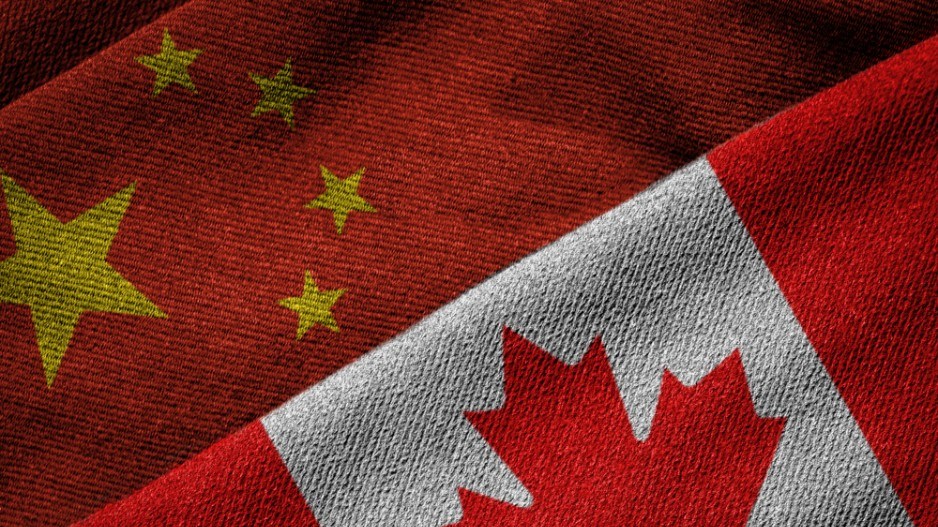For Canadian retail brands already committed to the Chinese market through e-commerce, the growing antagonism and rising trade barriers between Beijing and the West have not seriously impeded business, an industry expert said.
However, according to WPIC Marketing + Technologies co-founder/CEO (and B.C. native) Jacob Cooke, there is another serious threat that Canadian brands have to manage – the rising popularity of China’s home-grown brands.
WPIC, which specializes in bringing foreign brands into the Chinese market through e-commerce and data analytics, said COVID has driven consumers towards online shopping more than ever before, with the country’s overall web retail sales numbers up anywhere from 25% to 28% depending on the sector.
However, much of that growth has been driven by domestic Chinese brands, as new entrepreneurs are quick to learn what China’s consumers want – and market to them through Chinese social media channels in ways that resonate more with the audience there.
“When you look at the overall market growth, that is driven by local brands in a lot of cases,” said Cooke. “For the foreign brands, many are dealing with growth rates closer to 7-9%.
“The local brands are doing very well, and you could see this was going to happen five years ago, because local brands adapt extremely fast to the market – and they don’t care about anywhere else other than China. They read their data and customers very well, and that’s reflected in the market-share growth.”
The most recent example is Shein, an online fashion platform/brand where clothing items sell for as little as $4 but total annual revenue has now reached an estimate $14 billion after being founded in 2008. The brand offers a number of items similar to its Western competitors at dramatically cheaper prices because of its fully controlled supply chain, while the company also delves heavily into celebrity and social-media influencer partnerships to further exposure.
“When you look at competition 5-10 years ago, you talk about what other foreign brands are coming into the market,” Cooke said of the advice he gives to his Canadian brand clients. “You didn’t really have to worry about local brands – and that’s not the case anymore. The Gen-Z coming out of school right now and doing a really good job of leveraging social-media engagement and other brand-building measures.”
But it doesn’t mean there are no chance for success for Canadian brands already in China. Cooke noted the 550-plus Western brands WPIC represents – including major Vancouver-area brands such as lululemon athletica inc. and Arc’teryx Inc. - actually saw growth last year in the 12% - 18% range. While not as high as the domestic brands’ numbers, Cooke said the foreign brand numbers point out a way to thrive even in a challenging market space.
“Market share can be a little misleading,” Cooke said. “Just because the local brands are growing faster doesn’t mean imported brands aren't growing... But you have to look at the data available to you. How can you tailor your products to consumers in China better? Understand where you can be price-competitive. Where are your manufacturing hubs? Can you manage how your product hits the market in a more efficient manner?”
He noted recent success stories of new Canadian brands in China through WPIC – Montreal-based fashion brand Rudsak and Manitoba’s Suku Vitamins, in particular – as evidence that doing business in China is still possible.
Cooke admits that current interest in Canada for new brands to enter the Chinese market is low – especially in the last six months due to the geopolitical friction between Beijing and the West. He added that the current trade barriers put up by China against Australia have been ironclad in terms of preventing any goods with Australian content getting into the Chinese market.
(Regional observers and critics have said China's recent tariff barriers against Australian products were likely in retaliation for a number of hard-line stances Canberra took against Beijing on issues like COVID’s origins and human-rights abuses in Xinjiang and Hong Kong. Beijing, however, has said Australia is to blame for its "Cold War mindset" and what it describes as ideological discrimination.)
Canadian products, however, still has a path to enter China, according to WPIC.
“I’d say there’s about 40-50% that we were able to avoid the barriers, because no product is made in one place,” Cooke said. “And when that is the case, exemptions usually get approved.”
That is why WPIC is actually growing; officials said they are expanding its North American office (based in Vancouver) beyond its current employee count of 25, adding that more expansion is coming in China and Japan (the two markets where WPIC sells Western brands).
“We’ve had tough times two years ago getting talent interested in things like this, and in the last 18 months, we’ve been exceptionally lucky in being able to add the bench strength we were looking to add,” Cooke said.
“I hate to say this, but COVID has been really good for e-commerce.”




